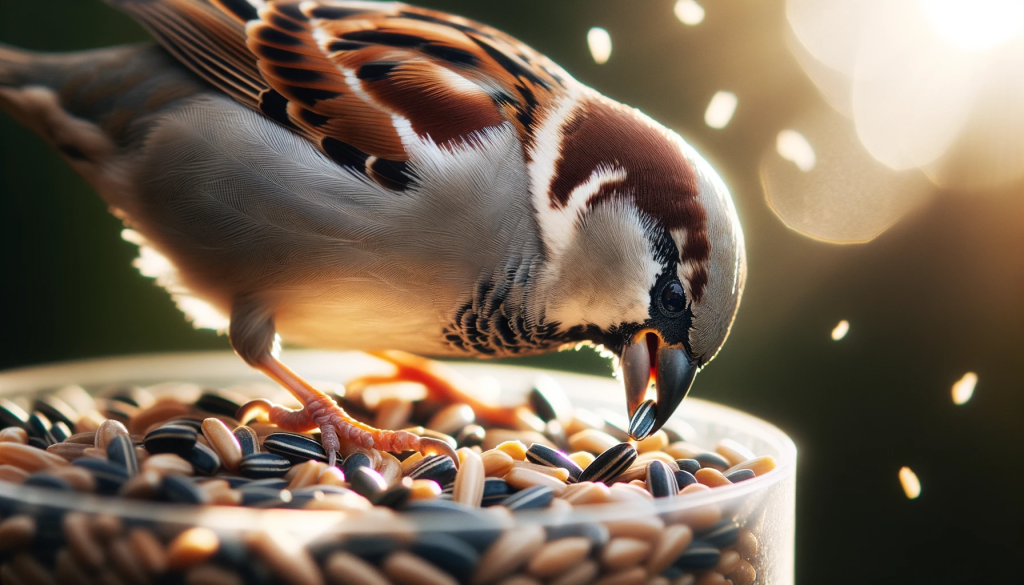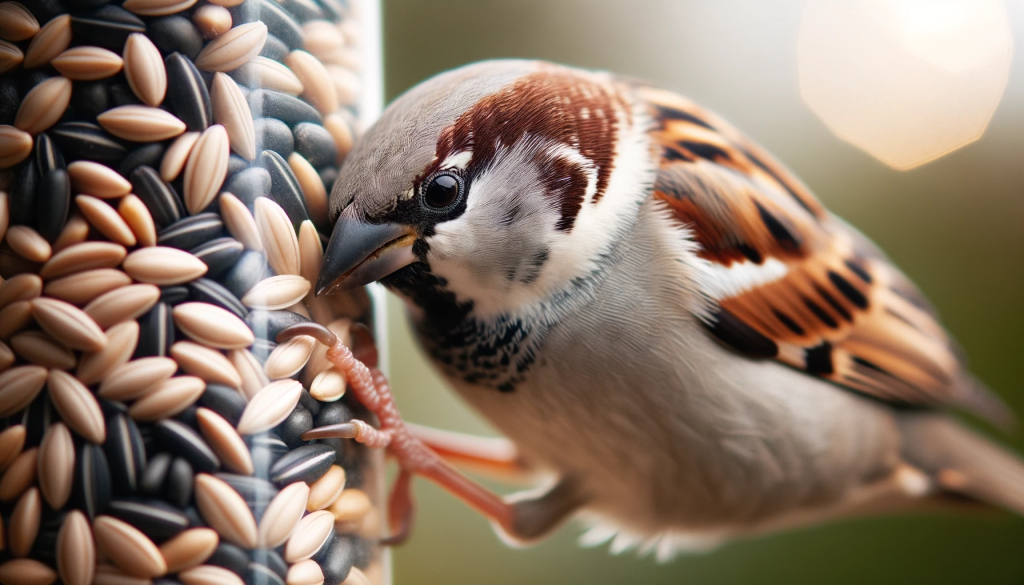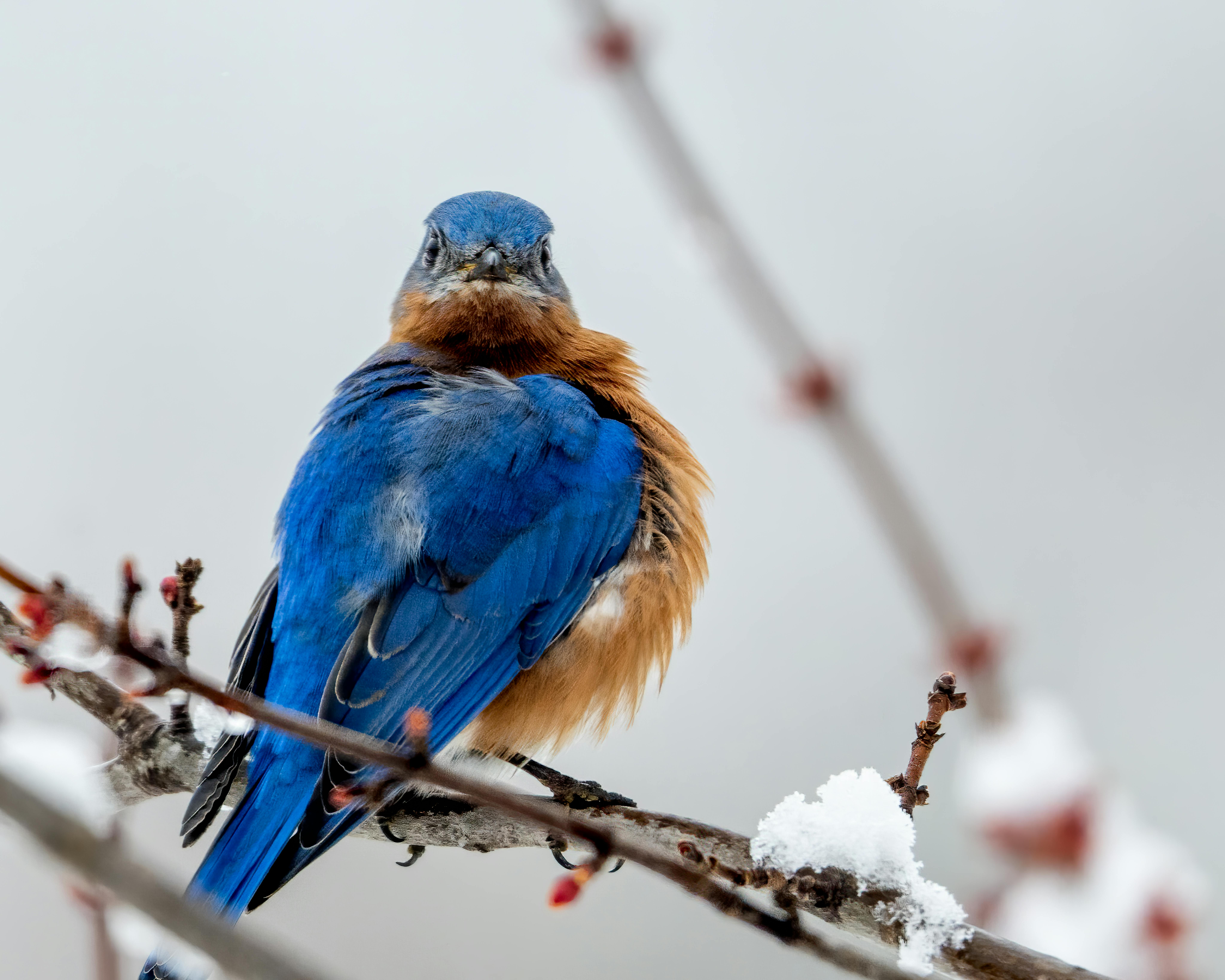Are you a bird enthusiast who loves observing sparrows? If so, you’ll find this article on sparrow identification and habitat incredibly helpful. From the different species of sparrows to their distinctive features and preferred habitats, this guide will equip you with the knowledge you need to identify and appreciate these delightful feathered creatures. So grab your binoculars, let’s embark on a journey to unravel the secrets of sparrow identification!
Overview
Sparrows are a common group of birds found worldwide, known for their small size, energetic behavior, and melodious songs. In this comprehensive guide to sparrow identification, we will explore the common traits and physical features of sparrows, discuss various sparrow species found in North America, delve into their behavior and vocalizations, examine their migration patterns, provide tips for identification, address confusion with similar species, and discuss their conservation status.
Common traits of sparrows
Sparrows are small, chunky birds with rounded bodies and short, stout beaks. They typically have a perky and energetic demeanor, often seen hopping on the ground in search of food. Sparrows are known for their intriguing songs, which vary among species and provide helpful cues for identification. They are highly adaptable birds that can be found in a variety of habitats, from urban areas to rural landscapes.

Habitat preferences
While sparrows are a highly adaptable group of birds, they do have preferences for certain types of habitats. Most sparrows inhabit grassy areas, open fields, farmland, and shrubby landscapes with ample vegetation. They are also commonly found in parks, gardens, and suburbs. Different species of sparrows may have specific preferences for particular habitats, such as the House Sparrow’s affinity for human-made structures or the Field Sparrow’s preference for grassy and brushy open areas.
Physical features
Size and shape
Sparrows are typically small birds, measuring around 4 to 7 inches in length. They have a plump and rounded body shape, with short wings and tails. Their bodies are designed for agile flying and quick movements on the ground.
Plumage coloration
Sparrows exhibit a wide range of plumage colors, which can vary greatly among species. Common colors include shades of brown, gray, black, and white. Some sparrows may also have distinctive markings such as streaks or patches of color on their heads, backs, or breasts. The coloration of their feathers often serves as helpful identification clues.
Bill characteristics
Sparrows have short and stout beaks, adapted for a variety of feeding behaviors. Their bills are primarily designed for cracking open seeds and consuming small insects. Different species of sparrows may have slight variations in bill size, shape, and coloration, which can aid in identification.
Tail characteristics
Though often overlooked, the shape and length of a sparrow’s tail can provide valuable insights for identification. Some sparrows have square or slightly notched tails, while others have longer, more rounded tails. Variations in tail shape can be notable when comparing species.
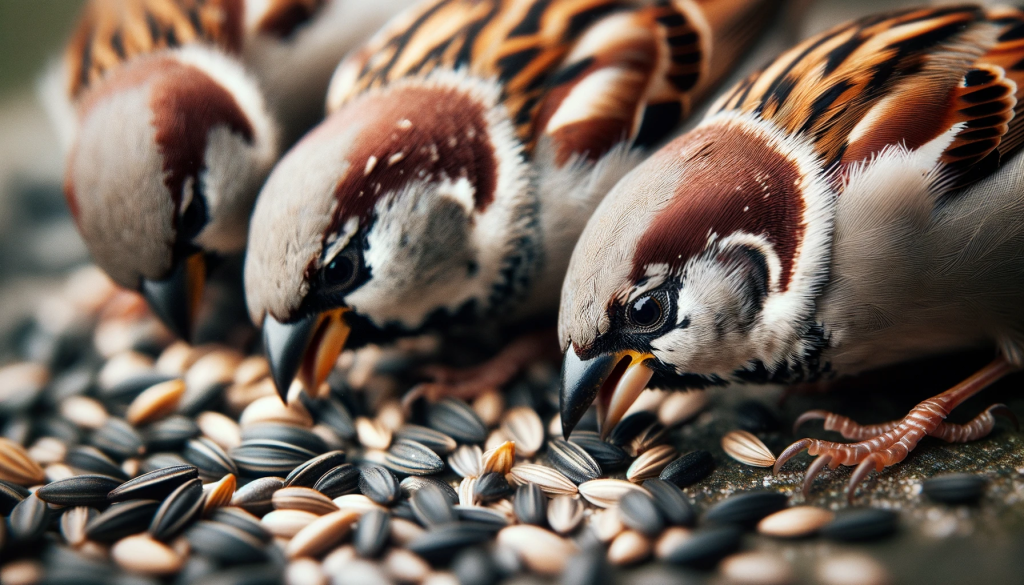
Sparrow species in North America
North America is home to a diverse array of sparrow species, each with their own unique characteristics and habits. Let’s take a closer look at some of the most commonly encountered species:
House Sparrow
The House Sparrow is one of the most widespread and easily recognizable sparrow species. These birds have a chunky build, short tail, and a combination of brown, gray, and black feathers. Males sport a distinctive black bib on their throat, while females have more muted colors. House Sparrows are known for their adaptive behavior and tendency to inhabit urban areas, where they nest in buildings and feed on a variety of human-provided food sources.
House Sparrows are not closely related to other North American sparrows. They possess distinct physical characteristics that set them apart from their counterparts. Unlike most American sparrows, House Sparrows have a stockier build, a more full chest, a larger and rounded head, a shorter tail, and a stouter bill. Hence, these differences in appearance indicate that House Sparrows are not part of the same lineage as other North American sparrows.
House Sparrows are noisy sparrows that flutter down from eaves and fencerows to hop and peck at crumbs or birdseed. Look for them flying in and out of nest holes hidden behind shop signs or in traffic lights, or hanging around parking lots waiting for crumbs and picking insects off car grills.
Song Sparrow
The Song Sparrow is a well-known and melodious species, known for its beautiful singing abilities. These birds have a streaky brown plumage, with a white or gray breast marked by a central dark spot. They have a rounded body shape and a long, thin tail. Song Sparrows particularly favor habitats near water, such as marshes, streams, and lakeshores, where they can frequently be heard belting out their captivating tunes.
White-throated Sparrow
The White-throated Sparrow is a striking bird with a distinctive appearance. This species showcases a bold white throat, set against a warm gray or brown body. Its head is adorned with crown stripes in white or yellow, depending on the individual’s age and sex. White-throated Sparrows inhabit forests, woodlands, and shrubby areas, where they are often seen foraging on or near the ground.




Chipping Sparrow
Chipping Sparrows are small and dainty birds with a bright and cheerful appearance. They have a rusty-brown crown, grayish face, and a clean white or pale gray breast. Their distinctive song, resembling the sound of a repeated chip, gives them their name. Chipping Sparrows prefer open habitats with scattered trees, such as wood edges, clearings, and gardens, where they search for insects and seeds.
Field Sparrow
Field Sparrows are known for their subtle beauty and enchanting songs. These birds have a warm brown coloration, with a reddish-brown crown and back, contrasted by a pale gray or white breast. They possess a small bill and short tail. Field Sparrows can be found in grassy fields, meadows, and scrublands, where they sing their delicate and distinctive songs from exposed perches.
Savannah Sparrow
With its streaky plumage and yellow eyebrows, the Savannah Sparrow is a fascinating bird to observe. This species showcases a combination of brown, gray, and white feathers, with bold streaks on its crown, back, and wings. Savannah Sparrows inhabit grassy and marshy areas, where they can be seen foraging on the ground or perching on tall grass stalks.
Fox Sparrow
The Fox Sparrow is a larger sparrow species with a captivating reddish-brown plumage. These birds have a heavily streaked breast, and their coloration can vary among individuals and regions. Fox Sparrows prefer woodland and shrubby habitats, where they use their strong, conical bills to forage for seeds, berries, and insects on the forest floor.
Sparrow behavior
Foraging habits
Sparrows are primarily seed-eating birds, and their foraging habits are centered around finding and consuming a variety of seeds. They are often seen on the ground, meticulously searching for seeds, grain, insects, and other small invertebrates. Sparrows employ a scratching or hopping method to uncover food from the leaf litter or grass. Some species, like the Chipping Sparrow, may also pluck insects in mid-air during their feeding activities.
Nesting behavior
Sparrows have diverse nesting behaviors, with different species exhibiting distinct preferences for nesting locations and materials. Some sparrows, such as the House Sparrow, build their nests in human-made structures like buildings, bridges, or birdhouses. Others, like the Song Sparrow or White-throated Sparrow, construct cup-shaped nests in shrubs or low trees. Sparrows are diligent builders, using a combination of grasses, twigs, and other plant materials to create their nests.
Vocalizations
One of the most fascinating aspects of sparrows is their rich and varied vocal repertoire. Each species has its own unique song, which can be used as a powerful tool for identification. Some sparrow songs are strong and melodic, like the Song Sparrow’s song, while others are more delicate and subtle, such as the Field Sparrow’s song. Sparrows also produce a variety of calls, ranging from soft chips and chirps to more forceful and aggressive alarm calls.

Distinctive sparrow songs
A key aspect of sparrow identification is learning to recognize their songs. Each species has a distinctive vocalization, and with practice, it becomes easier to identify individual songs. For example, the House Sparrow’s song is a series of cheerful chirps and trills, while the Song Sparrow’s song is a melodious and complex series of musical notes. The White-throated Sparrow’s song features a clear, whistle-like phrase of “Old Sam Peabody, Peabody, Peabody,” repeated with slight variations.
Migration patterns
Sparrows exhibit a range of migration patterns, with some species being year-round residents while others undertake extensive seasonal movements. Let’s take a look at the different types of sparrow migrants:
Summer residents
Certain sparrows are considered summer residents, meaning they breed and reside in North America during the warmer months. These species, including the Song Sparrow and White-throated Sparrow, spend their winters in southern regions or migrate to more suitable habitats within North America. They return to their breeding grounds typically in the spring, where they engage in courtship, nesting, and raising their young.
Winter residents
Other sparrow species are winter residents, meaning they migrate to North America during the colder months to take advantage of the region’s milder climate and available food sources. Some of these species, like the Fox Sparrow, originate from much more northern latitudes and seek refuge in southern Canada or the United States to escape harsh winters. They return to their breeding grounds in late winter or early spring.
Passage migrants
A third category of sparrow migrants comprises passage migrants. These species migrate through North America during spring and fall, using the region as a stopover to rest and refuel on their way to their final breeding or wintering grounds. Sparrows like the Chipping Sparrow and Savannah Sparrow can be observed in large numbers during their seasonal movements, providing birdwatchers with exciting opportunities to spot various species in transit.
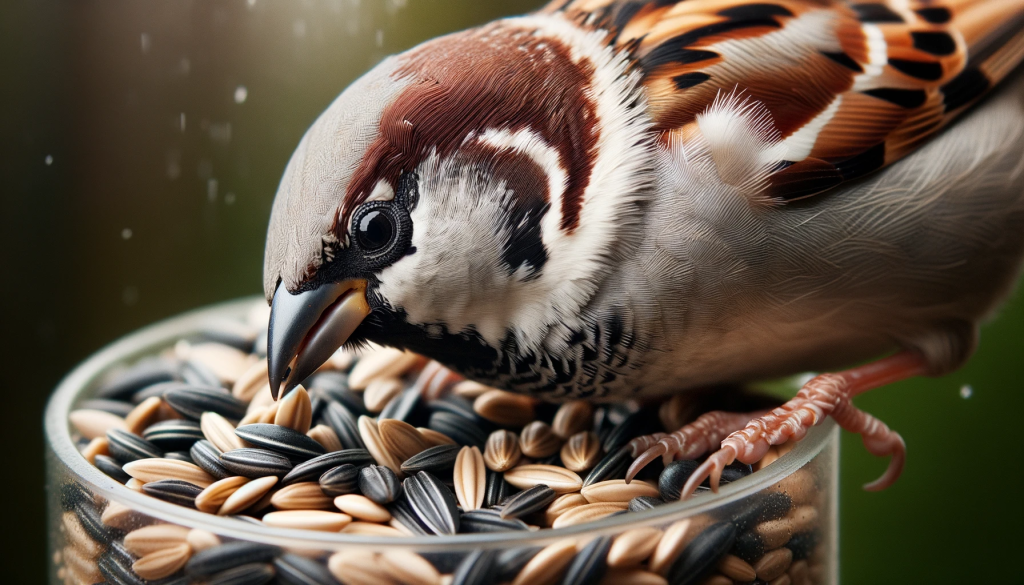
How to identify sparrows
Using a field guide
Identifying sparrows can be challenging, especially for beginners. However, the use of a reliable field guide can greatly assist in the process. Field guides provide detailed illustrations or photographs, alongside useful descriptions, range maps, and identification tips. By comparing field marks and studying the accompanying information, you can gain confidence in identifying different sparrow species accurately.
Key identification features
When identifying sparrows, it’s essential to pay attention to key features such as size, shape, coloration, and markings. Take note of the bird’s overall size and proportion, the color and distinctive patterns on its head, back, breast, and wings, and any unique characteristics such as an eye ring or throat patch. By observing these features and comparing them to the descriptions provided in field guides, you can narrow down the possibilities and identify the species.
Locations and habitats
Another helpful aspect of sparrow identification is considering the bird’s location and habitat. Certain species have specific preferences for particular habitats, such as the Field Sparrow’s affinity for grassy fields or the White-throated Sparrow’s inclination for wooded areas. By familiarizing yourself with the typical range and habitat preferences of different sparrows, you can make informed guesses about the species you are observing.
Tips for sparrow identification
Take note of throat patterns
Throat patterns can be particularly useful in identifying sparrows. Pay attention to the color, pattern, and markings on the bird’s throat and upper breast. Some sparrows, like the White-throated Sparrow, have distinct white or yellow throat stripes, while others may have plain, streaked, or spotted throats. Throat patterns can serve as crucial field marks when trying to differentiate between similar species.
Observe behavior and habitat
Observing a sparrow’s behavior and the habitat it occupies can provide valuable clues for identification. Some species have specific habits, such as the Song Sparrow’s affinity for perching on exposed branches and singing loudly or the Savannah Sparrow’s tendency to forage on the ground near grassy areas. By watching how sparrows interact with their surroundings and noting their preferred habitats, you can narrow down the possibilities.
Listen to vocalizations
Learning to identify sparrow songs and calls can greatly enhance your ability to identify these birds in the field. Familiarize yourself with the unique vocalizations of each species, and practice listening to recordings or joining bird walks led by experienced birders. By training your ear to recognize different sparrow songs, you can significantly improve your identification skills.
Similar species confusion
Distinguishing sparrows from finches
Sparrows and finches can sometimes be confused due to their similar size and shape. However, several key features can help distinguish between them. Finches generally have thicker bills and often exhibit more vibrant plumage colors, such as bright red, yellow, or orange. Sparrows, on the other hand, have slimmer bills and tend to showcase more muted coloration, comprising shades of brown, gray, and white.
Differentiating similar sparrows
Some species of sparrows can be quite similar in appearance, making identification challenging. To differentiate between similar sparrows, focus on subtle distinctions in plumage coloration, markings, and patterns. Pay close attention to specific field marks, such as the shape and color of the crown stripes, the presence or absence of an eye ring, the size and configuration of streaks on the back or breast, and any other unique characteristics mentioned in field guides.
Conservation status
Threats to sparrows
While sparrows are still relatively common and widespread, some species face significant threats to their populations. Habitat loss due to urbanization, agriculture, and deforestation is a major concern for many sparrow species. Climate change also poses risks, affecting their available breeding and wintering habitats. Other threats include pesticide use, pollution, and the introduction of non-native species. These factors combined put pressure on sparrows’ breeding success, foraging opportunities, and overall population health.
Conservation efforts
Various organizations and bird conservation groups are actively engaged in efforts to protect sparrows and their habitats. These initiatives include preserving and restoring important breeding and wintering habitats, raising public awareness about the importance of sparrows and the threats they face, and conducting research to better understand the needs and behaviors of different sparrow species. By supporting these conservation efforts and participating in citizen science initiatives, individuals can contribute to the well-being and survival of sparrows.
In conclusion, sparrows are delightful and fascinating birds that can be found in a variety of habitats throughout North America. By understanding their common traits, physical features, behavior, vocalizations, migration patterns, and identification cues, we can develop a deeper appreciation for these small but remarkable avian creatures. Let us cherish sparrows and help protect their habitats, ensuring a healthy and vibrant future for these charming members of our avian community.
